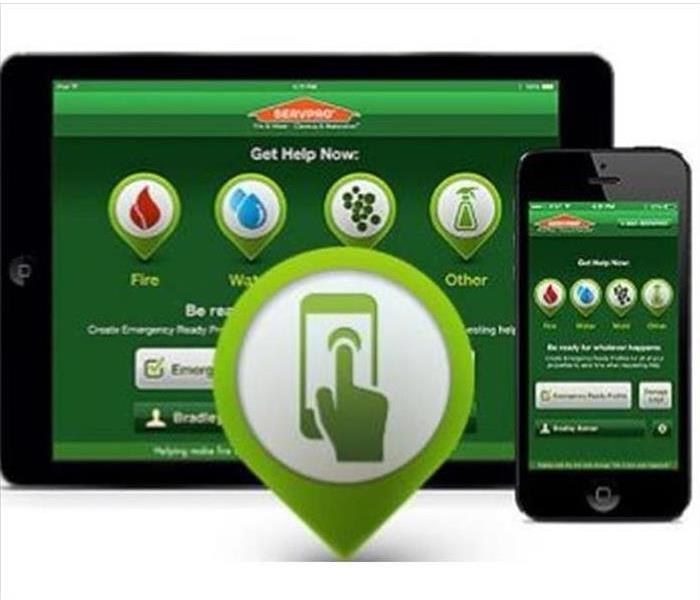How Can You Protect Your Home from the Worst Effects of Flooding?
12/21/2021 (Permalink)
 SERVPRO Says to Walton County Property Owners--Be Prepared for Storms, Hurricanes, and Flooding with our ERP Emergency READY Profile Plan
SERVPRO Says to Walton County Property Owners--Be Prepared for Storms, Hurricanes, and Flooding with our ERP Emergency READY Profile Plan
You Can Mitigate the Effects of Flooding on Your Walton County Home by Doing a Few Simple Things Before and After a Flood.
Due to its location on the Gulf Coast, Walton County is especially prone to hurricanes and the flooding they generally bring. These massive storms routinely pass over the county between June and the end of November, rapidly dropping several inches of rain, knocking over trees, and whipping up the surf in their path. In their wake, they often leave extensive damage that requires the assistance of trained remediation professionals. Moreover, if proper precautions are not taken before a severe weather event and there are no mitigation efforts after such an occurrence, cleanup and restoration could become quite costly. Fortunately, modern weather forecasting has made it possible to effectively prepare for approaching storms and plan post-storm efforts up to a week before they arrive.
How Can I Lessen the Potential Impact of a Future Flooding Event Today?
There are numerous things you can do now to substantially better your odds of avoiding or more easily remedying the worst flood damage Walton County weather is capable of causing. The following is a list of measures SERVPRO, a local cleanup, and restoration service, suggests that you take to protect your home before storms are even forecasted:
- Go to the Federal Emergency Management Agency’s (FEMA) website and, using its search tool, enter your home’s address to determine its zone designation and risk of flooding
- Make sure your homeowner's insurance policy covers flood damage if you are located in a higher risk area and if it does not, buy flood insurance (note: flood insurance is required as a condition of many Florida mortgages)
- If you ever notice standing water issues around your community following rains, contact your county government about possibly improving the drainage in your area
- Find out the base flood elevation (BFE), or the level floodwaters are predicted to rise to in your home during periods of severe flooding and try to locate all electrical sockets, electronics, appliances, backup generators, and any other sensitive equipment at least a foot above that imagined high water line
- Hire a plumber to install a gate valve or backflow on every sewer pipe connected to your home so that floodwaters do not force sewage back up into your residence
- Create a SERVPRO Emergency READY Profile (ERP) for your residence to establish SERVPRO as your remediator, record all contact information and critical details about your property, and facilitate the rapid development of a plan of action for when a flooding event occurs
All of these preventative actions should protect you from suffering the most costly and time-consuming to repair flood-related issues.
What Steps Can I Take Immediately Before a Potential Storm to Lower My Risks of Suffering Catastrophic Flood Damage?
Modern forecasting technologies, like advanced satellite imaging and radar, have made it much easier for local residents to reduce their overall weather-associated risks. This they have been able to do by vigilantly monitoring weather conditions and properly preparing for all approaching severe storms. Some of these preparations involve:
- Repairing any roof damage and ensuring that your gutters are clean and in good working order
- Making sure your drainage system is functional and draining water away from your home
- Fixing any cracks or other foundation damage that might allow floodwaters into your basement or lower levels
- Repairing driveways, sidewalks, and landscaping elements that might allow water to pool or to more easily flow toward your house
- Sandbagging the perimeter of your property to divert stormwaters away from your residence
- Shutting off utilities like electric, gas, and water before leaving your home
Simply by preparing in this way, SERVPRO asserts, you can sometimes avoid flooding and the headaches that come with it altogether. Even if you are not that fortunate, these measures should markedly reduce the amount of floodwater that ultimately enters your home.
What Can I Do to Mitigate Damages After Flooding Occurs?
Once flooding occurs there are still a few things you can do to reduce overall damages. In order to do this, SERVPRO suggests taking the following actions after a flood:
- Contact a reputable flood damage remediation service as soon as possible
- Refrain from using household appliances to avoid potential electrical issues
- If it has been determined to be safe, open windows and use fans to ventilate your house; in the more humid summer months, close your windows and turn the air conditioner on to reduce interior humidity levels
- Avoid walking on or touching impacted surfaces to prevent collapses or other additional damage
- Quickly remove all remaining artworks and other valuable property to a safe location
In these simple ways, homeowners can help SERVPRO technicians get their work done more quickly once they arrive onsite.
Remember, though, your neighbors at SERVPRO of Destin, Seaside, and Freeport are always here to help. Call us at (850) 267-0746 whenever you need us.






 24/7 Emergency Service
24/7 Emergency Service